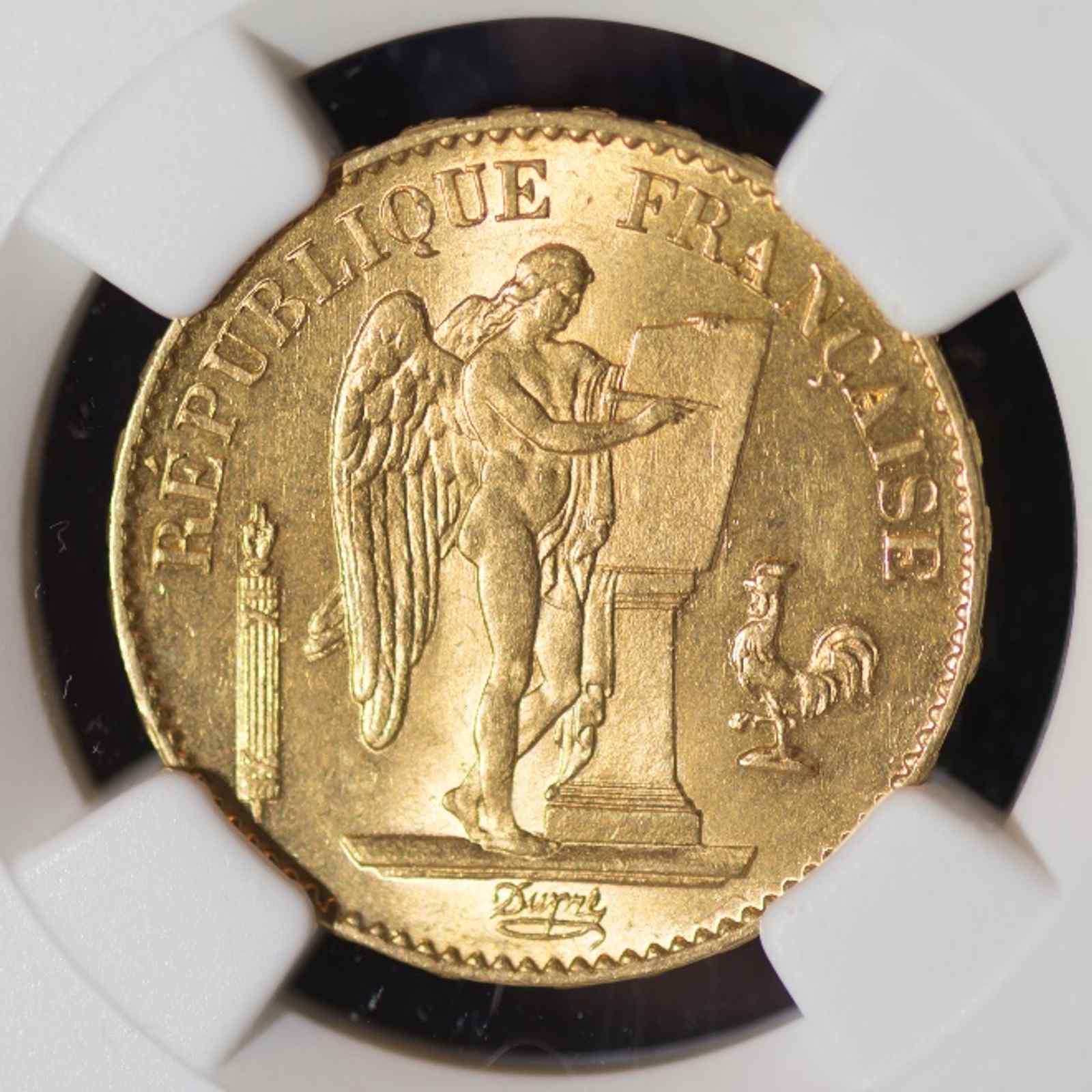That's No Angel
There’s a popular series of French gold 20 Franc and 100 Franc coins that were produced from around 1870-1898. I say “popular” insofar as coin collectors and goldbugs like them. The design is often referred to as a French “Angel,” “Lucky Angel,” or “Wise Angel,” in the United States.
For reference, you can see how APMEX markets the coin:
“…minted between 1871-1898 make excellent gifts. Their angelic design makes them popular with investors and collectors alike. The Lucky Angel coin design is often used for gift giving because of its iconic design.”
Personally, I think it’s generous to suggest that the “angel” is the reason why these coins are popular to “investors.” Most comments that I see indicate that buyers are just as happy to buy similar 19th Century European gold coins from this period, because the coins are gold and these investors are wanting to buy gold. But, getting back to my point – the design is significantly older than the 1870s and isn’t supposed to depict an angel at all.
The design was originally made by Augustin Dupre, an artist who was principally inspired by the neoclassical school and its themes, which included law, freedom (including “freedom” personified as a winged male), scales, Greek mythology and Hellenistic beauty standards.
The design by Dupre depicts a “Génie ailé” (“Winged genius”) and it first appeared on French coinage in 1792, during the heart of the French Revolution. Dupre was named the Graveur général des monnaies (Chief Engraver of Coins) by the national assembly in July, 1791. In the original versions of the coin the figure is writing the word Loi (Law) on a tablet. Some versions of the coin include the motto “Le Règne de la Loi” (“The Reign of Law”). In the post revolution period the coins might read something like “An III de la liberté” (“Year three of the liberty”). In some later uses of the design the figure is writing “Constitution” on the tablet. That tablet isn’t some biblical reference to the tablets of the ten commandments - sorry if anyone was holding out hope there.
The coin design was revived in the 1870s, long after Dupre passed away in 1833, and placed on 20 Franc and 100 Franc coins. Saying that these later versions were designed by Dupre is therefore a bit inaccurate, but they do feature his art.
If you want another hint that the design might not be Christian in origin or inspiration, the 20 Franc coins simply say “Republique Francaise” (French Republic) on the obverse. On the reverse side the coin just says, “Liberte, Egalite, Fraternite” (“Liberty, Equality, Brotherhood”). There’s nothing on the coin that references “God,” gods, or divine favor. By contrast, a US silver dollar from this period (1878 and later) would have proudly stated “In God We Trust.” For another example, 10 Gulden coins made in the Netherlands during this same period were inscribed with “God Zij Met Ons” (“God be with us”).

The only reason this coin is called an “angel” in the US is because uninformed people in the US see a winged figure and think, “Oh! It’s an angel.”
I thought it was an angel too because it looked like one and because that’s what everyone else was calling it. But I just couldn’t help but wonder why they would have made a design like that and what would have inspired/instigated that in the post-revolutionary period. It was a real head-scratcher to me. Why an angel on coins in France in the late 19th century? Now I know: It’s not an angel.
I found the design fascinating and interesting before, but I find that I like it a lot more now that I know the historical context.
Apparently, there’s a legend whereby Dupre was headed for the guillotine but he was somehow saved by his “lucky angel.” This seems unlikely to be true. Dupre wasn’t a wealthy noble; he was appointed to his position by the national assembly; he wasn’t a counter-revolutionary. There’s no obvious reason why his “lucky angel” would have needed to intervene and save his neck. He held his official position until 1803, well after the Reign of Terror ended in the mid-1790s. He was dismissed by the First Consulate.

Why point all of this out? (“Why are you stealing my joy?!?” *sob* a la Seth Andrews) Well … the designer wasn’t trying to depict an angel, and, in my opinion, calling it an angel is disrespectful to the artist. It’s not quite as bad as all of the people who think Ewan McGregor / Obi Wan Kenobi is Jesus, but it’s a pretty significant misinterpretation of the image.
Now I just have to figure out … “Why the rooster?
Reference:
https://everipedia.org/wiki/lang_en/Augustin_Dupré/
https://www.apmex.com/product/1049/france-gold-20-francs-lucky-angel-avg-circ

